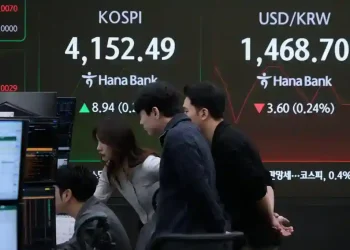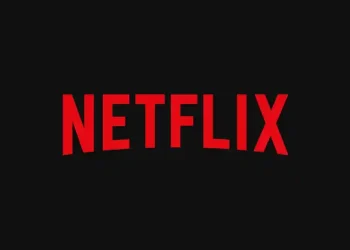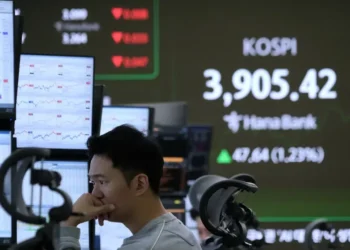Starbucks CEO made 6,666 times more than median worker in 2024
July 23, 2025 – 4:30 PM PST
A new report has reignited the national debate over executive pay and income inequality in America — and Starbucks finds itself at the center of the storm. According to the AFL-CIO’s 2025 Executive Paywatch report, Starbucks CEO Brian Niccol earned nearly $98 million in 2024. That’s 6,666 times more than the company’s median employee, marking the largest CEO-to-worker pay ratio among all S&P 500 companies last year.
The numbers behind the pay gap
The AFL-CIO report shows that median CEO compensation at S&P 500 companies reached $18.9 million in 2024 — a 7% increase from 2023. In contrast, the average American worker earned just $49,500, widening the average CEO-to-worker pay ratio to 285:1, up from 268:1 the year before.
But Starbucks blew past that average.
Niccol, who formally stepped into the CEO role in September 2024, received a total compensation package valued at $97.6 million, according to Securities and Exchange Commission (SEC) filings. Meanwhile, the company’s median worker, typically a part-time barista working flexible shifts, made less than $15,000 for the year.
In its filing, Starbucks clarified that its pay calculations include 361,000 global employees, which lowers the average due to lower wages in certain markets. However, even accounting for that, the 6,666:1 ratio far exceeded peers.
“A typical employee would have needed to start working in the year 1740 to match what a top CEO made in 2024,” the report noted.
Understanding executive compensation
CEO pay isn’t just a base salary — it often includes stock awards, bonuses, and performance incentives. For Niccol, the bulk of his 2024 compensation came from restricted stock units tied to long-term performance targets. His actual base salary was far lower, but the equity and bonus incentives pushed the package near $98 million.
This structure is common across corporate America. In fact, more than 50% of CEO pay in the S&P 500 comes from stock-based awards. In 2024, Axon Enterprise CEO Patrick Smith topped the overall list with a compensation package of $165 million, placing Niccol in second.
Workers respond: A surge in union activism
The staggering pay gap comes as Starbucks faces increasing pressure from its workforce. Over the past two years, thousands of employees have joined Starbucks Workers United, a national union movement fighting for higher wages, better scheduling, and improved benefits.
Fred Redmond, secretary-treasurer of the AFL-CIO, said the numbers highlight why labor organizing is growing:
“It’s no wonder why the workers at Starbucks are fighting to form a union. These numbers only scratch the surface of how runaway executive pay is fueling economic inequality.”
In response to growing unrest, Starbucks has seen walkouts and protests at dozens of stores across the country. Workers have demanded a living wage, more stable schedules, and union recognition — particularly in light of the massive executive pay.
Tax cuts and policy shifts deepen the divide
The AFL-CIO also pointed to recent policy changes that favor top earners. Under President Donald Trump’s 2025 tax reform law — passed on July 4, 2025 — several corporate tax breaks from the 2017 Tax Cuts and Jobs Act were made permanent.
According to the union:
- The average CEO will receive a $490,000 tax cut
- The average U.S. worker will get only $765 in tax savings
Critics say the policy disproportionately benefits the ultra-wealthy while doing little for everyday employees — further exacerbating wage inequality.
Why this matters
The Starbucks pay gap is more than a headline — it’s a flashpoint in a broader debate about fairness in the workplace. As inflation, housing costs, and debt burdens continue to strain working families, many are asking whether companies should do more to bridge the gap between top leadership and frontline employees.
Labor experts say the issue could become a key topic in the 2025 presidential election, especially as union support grows among younger workers.
“We’re seeing a generational shift,” said labor economist Maria Sanchez. “Young workers expect more transparency and fairness. This kind of executive pay story just fuels the fire.”
What’s next for Starbucks?
While the company has defended its compensation structure as being “competitive and performance-based,” the optics of the 6,666:1 ratio could have long-term consequences.
Union organizing is expanding into more states. Shareholders are demanding greater transparency. And lawmakers — especially progressives — are calling for CEO pay ratio caps and excess compensation taxes.
Whether Starbucks adjusts its strategy remains to be seen. But the numbers from 2024 suggest the gap between boardroom and breakroom has never been wider.
Want more stories like this?
Want to read more about worker rights and corporate pay trends? Check out our coverage on union wins at Amazon and the growing push for a $20 minimum wage.
This article was rewritten by JournosNews.com based on verified reporting from trusted sources. The content has been independently reviewed, fact-checked, and edited for accuracy, neutrality, tone, and global readability in accordance with Google News and AdSense standards.
All opinions, quotes, or statements from contributors, experts, or sourced organizations do not necessarily reflect the views of JournosNews.com. JournosNews.com maintains full editorial independence from any external funders, sponsors, or organizations.
Stay informed with JournosNews.com — your trusted source for verified global reporting and in-depth analysis. Follow us on Google News, BlueSky, and X for real-time updates.














